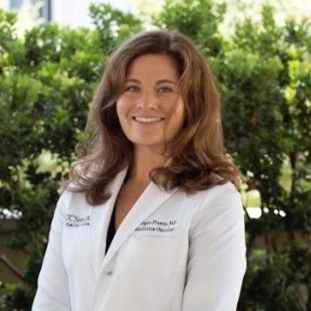1022 - Evaluating an Interactive Online Contouring Education Platform for Radiation Oncology Residents: Results of an International Longitudinal Randomized Controlled Trial
Presenter(s)

M. E. Orr1,2, M. Yarmand3, B. Wang4, K. Daniels1, E. A. M. Duran1,2, L. A. D'Souza5, N. Weibel3, E. F. Gillespie6, J. D. Murphy1,2, and M. Sherer1,2; 1Department of Radiation Medicine and Applied Sciences, UC San Diego, La Jolla, CA, 2Center for Health Equity Education and Research, University of California, San Diego, La Jolla, CA, 3Department of Computer Science and Engineering, UC San Diego, La Jolla, CA, 4Department of Information Science, Cornell, Ithaca, NY, 5Department of Radiation Oncology, Rush University Medical Center, Chicago, IL, 6University of Washington, Department of Radiation Oncology, Seattle, WA
Purpose/Objective(s):
Variability in contouring practices can negatively impact patient outcomes. Traditional residency education relies on an apprenticeship model and published guidelines, which may lack accessibility, standardization, and personalized feedback. We hypothesized that iContour, an interactive online educational platform, would improve contouring accuracy among radiation oncology residents over the course of a clinical rotation.Materials/Methods:
iContour is a web-based platform that displays anonymized DICOM images with standard contouring functionalities. Two forms of disease site-specific educational priming content were available: short form providing a brief case overview, and long form which had in-depth instructional videos. After the priming content, users practiced contouring a case and received feedback including visual comparisons with expert contours and Dice Similarity Coefficient (DSC) measurements. All participants were completing a clinical rotation in either the Head/Neck (HN), Gynecologic (Gyn), or Gastrointestinal (GI) disease sites for the first time. They were randomly assigned in a 1:1:1 ratio to receive access to long form iContour cases, short form iContour cases, or no access (control arm) during their rotation. Each resident completed a pre and post-rotation contouring assessment consisting of three tasks from their respective disease site. The primary outcome was improvement in overlap with expert contours (measured by DSC scores) from the pre-test to the post-test across study arms. Subgroup analyses compared short vs long interventions and performance across disease sites.Results:
The trial enrolled 31 resident physicians, primarily from the US (n=27), with experience ranging from PGY-1 to PGY-5 (median PGY-2). Participants rotated in GI (n=5), GYN (n=14) or HN (n=12). Pre-rotation contouring scores were higher for GYN rotators (mean DSC 0.74 +/- standard deviation (SD) 0.19) than GI (mean 0.46 +/- 0.23) or HN (mean 0.58 +/- 0.22), p<0.001. Changes in DSC scores from pre- to post-rotation varied across study arms (Table 1). The differences in contouring improvement between iContour and control arms were not statistically significant (p=0.5624). A linear mixed effects model showed that iContour usage, module type (short/long), and disease site did not significantly impact contouring improvement.Conclusion:
The interactive iContour platform did not significantly improve contouring accuracy compared to standard clinical education. Resident contouring remained highly variable with only small improvements even after a dedicated disease site rotation. These findings underscore the need for continued efforts to enhance contouring education and standardization. Abstract 1022 - Table 1: Change in DSC from pre to post-rotation test by study arm (mean +/- SD)| Control | iContour | |
| GI | 0.09 +/- 0.24 (n=3) | 0.11 +/- 0.14 (n=2) |
| GYN | 0.00 +/- 0.14 (n=4) | 0.08 +/- 0.16 (n=10) |
| HN | -0.08 +/- 0.12 (n=4) | 0.03 +/- 0.15 (n=8) |
